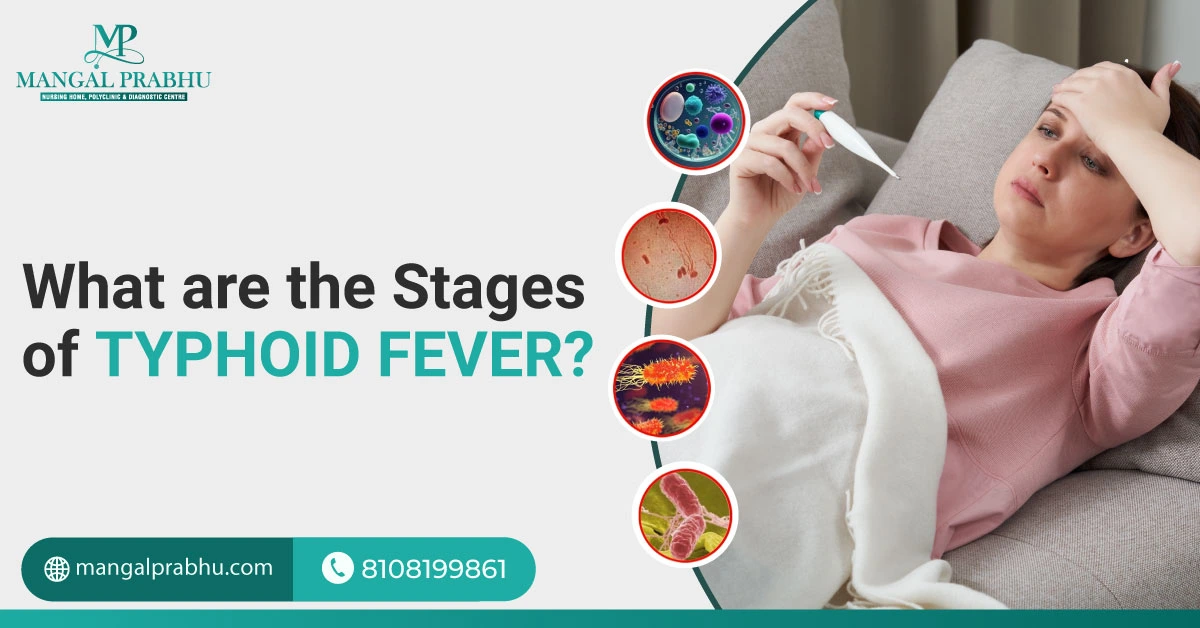
What are the Stages of Typhoid Fever?
Typhoid fever is a critical, contagious illness that occurs when the bacteria “Salmonella Typhi” enter your system and multiply within the bloodstream and intestines. People living in places where poor sanitation practices are followed are prone to contracting the illness.
It’s important that you know the different stages of typhoid fever, how it spreads, and, more importantly, prevention steps to minimize your risk of getting typhoid. If you suspect typhoid, seek immediate medical care from a General Physician in Navi Mumbai to reduce your risk of complications. In this post, we’ll walk you through the early and advanced stages of typhoid. Let’s take a look:
What are the Stages of Typhoid Fever?
Stage 1: Early Symptoms
The symptoms of typhoid aren’t noticeable in most cases during the incubation period or the early stage of the disease. This can start in the first few days of contracting the bacteria or up to 60 days. The severity of this contagious illness depends on your immunity and the bacterial strain ingested.
Stage 2: Acute Illness
Symptoms show up during this phase. As it progresses, you will notice high-grade fever, often spiking to 104°F, accompanied by muscle aches, fatigue, headache, and loss of appetite. The acute stage of typhoid fever can last for days and can lead to complications if left unaddressed for a long time. The symptoms start with a mild fever, which progresses gradually. Remember, the gradually increasing temperature and persistent fever are key indicators of typhoid.
Stage 3: Peak of Infection
If your doctor starts antibiotics during the acute phase, the symptoms will subside, and you’ll feel better. However, if the treatment isn’t started, the symptoms might worsen due to the bacteria spreading to the bloodstream and intestines. Some people report constipation, while others experience diarrhea. Abdominal pain is also common at this stage. You might experience difficulty concentrating due to the high-grade fever.
If you experience these symptoms, especially if your temperature doesn’t drop, visit the nearest hospital for typhoid treatment in Navi Mumbai. Delayed treatment can increase the risk of complications, including intestinal bleeding and septic shock.
Stage 4: Recovery
Also called the Convalescence stage, your body goes into the recovery phase. Your immune system fights off the infection, which may help subside the fever and manage other symptoms. Still, some patients report muscle aches, fatigue, and weakness for several weeks after the acute phase.
It’s important to follow your doctor’s advice and complete your course of antibiotics, even if the symptoms have subsided. Skipping medication can lead to the bacteria resurfacing.
Prevention Tips
To help mitigate the risk of typhoid, we have listed a few preventive measures that can help.
- Make a habit of washing your hands thoroughly before eating.
- Carry bottled water or boiled water when traveling.
- Avoid high-risk areas, especially if you have weak immunity.
- Vaccination is also available for those with an increased risk of contracting typhoid.
- Never eat veggies and fruits without washing them.
Conclusion
The symptoms of typhoid are often confused with flu and common cold. That’s why many people do not visit the hospital until the condition worsens and the fever doesn’t subside. The earlier you seek medical care, the better your chances of recovering quickly.

How Does Cancer Spread?
What makes cancer life-threatening is its ability to spread to the major organs. No matter where it started, it can travel through your bloodstream or lymph nodes and invade your vital organs. In medical terms, the process is called metastasis. An oncologist in Navi Mumbai provides cancer patients with an accurate diagnosis and a suitable treatment plan.
Simply put, cells from the tumor escape and enter your blood, transporting them to different parts of your body. Research regarding “how does cancer spread” is still going on. The more we know about the process, the more treatment options we can explore for a higher success rate.
How Does Cancer Spread?
Metastasis is a complex process. It starts with local invasion, in which the cancer cells break away from the tumor (in the primary site) and enter the nearby tissues.
From there, they find their way into your bloodstream and lymphatic system. That’s called intravasation. Your immune system kills most cancer cells at this stage, but a few might escape and settle in a new location. They form a secondary tumor there.
Common Sites for Metastasis
The areas invaded by the cancer cells depend on where the cancer starts. For example, cancer starting in the breast will travel to the lymph nodes of your underarms rather than your abdomen.
It also depends on the cancer cell type. These cells tend to settle in locations where they can thrive. Prostate cancer cells prefer your bones, as they offer these cells the environment to grow and spread. Here are the common locations for cancer cells to spread:
- Bladder cancer: Bones, lungs, or liver
- Breast cancer: Brain, liver, and lungs
- Prostate cancer: Bones, liver, lungs
- Lung cancer: Bones, brain, and liver
Most types of cancers spread to the lungs, liver, bones, and brain.
Detection and Diagnosis of Metastatic Cancer
Some cancers are detected when metastasized—already spread to other organs. Here’s the list of tools used for diagnosing metastatic cancer.
a) Imaging Techniques:
CT scans, ultrasounds, MRIs, bone scans, and PET scans are imaging tests that locate cancer cells and show their extent of spread.
b) Biopsy:
If malignancy is suspected, your doctor might extract sample tissues and send them to the lab for testing. These cells are tested for tumor markers or abnormal growth.
Treatment Options for Metastatic Cancer
A cancer Hospital in Navi Mumbai will discuss treatment options based on the originating site of the cancer, where it has spread, and your symptoms. Depending on the location, an oncologist might start with chemotherapy and radiation therapy.
In some cases, these are used in conjunction with hormonal therapy and immunotherapy. These treatment options are designed to kill cancer cells or slow their growth. In some cases, surgical removal of the tumor that has invaded a vital organ may be necessary.
Conclusion
Metastatic cancer, in most cases, is not curable, which is why early detection of cancer is key to a successful treatment. Treatment of metastatic cancer usually focuses on managing symptoms. That said, technological advancements have encouraged professionals to explore new treatment options and therapies to improve patient’s survival rates and quality of life.
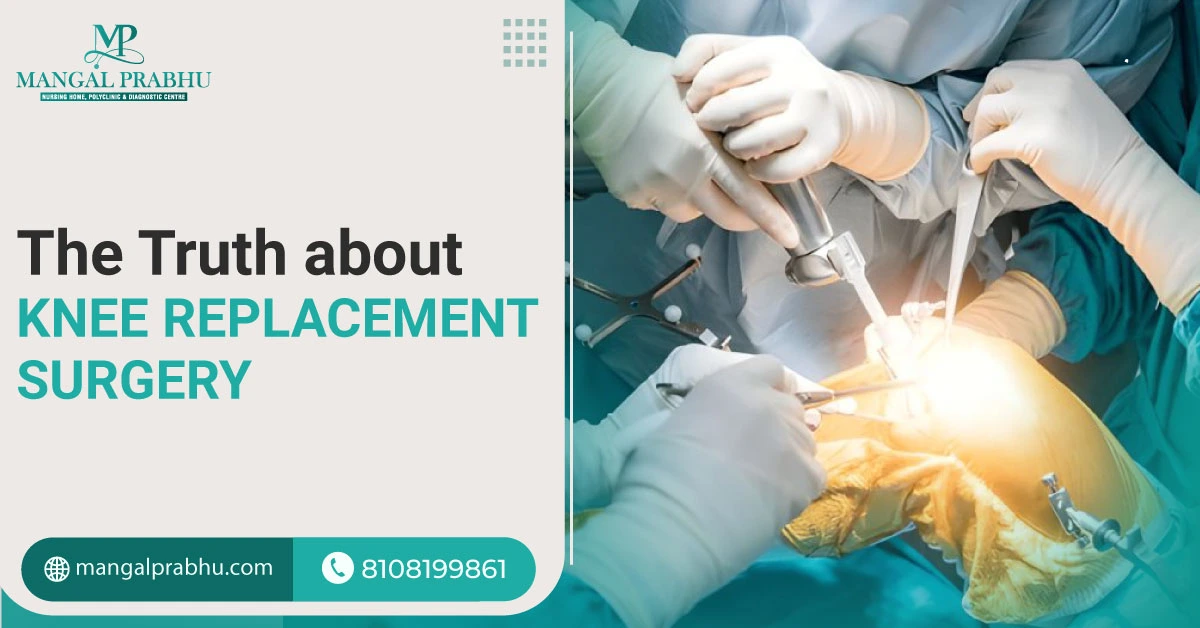
The Truth about Knee Replacement Surgery
With age, your joints face wear. Excessive wear and tear on knee joints significantly reduces their function and mobility. We live in a world where adults approach orthopedic surgeons in Navi Mumbai and consider knee replacement to get relief from debilitating pain.
However, like any invasive medical procedure, knee replacement surgery comes with its share of risks. If you’re unable to walk or experience severe knee pain, you might be a good candidate for knee replacement. In this post, we’ve mentioned some basic things you should know about the surgery.
Common Reasons for Knee Replacement
1) Osteoarthritis:
The most common reason for considering knee replacement is osteoarthritis. It occurs when cartilage breaks down, causing excessive pain and limiting mobility.
2) Rheumatoid Arthritis:
It’s an autoimmune disorder in which your immune system attacks your cartilage, bone, and surrounding structure, often requiring a total knee replacement. When the inflammation and joint damage go beyond repair and won’t respond to medication, a surgical intervention might be your only option.
3) Severe Knee Injuries:
A traumatic event that fractures your knee joint or causes severe cartilage damage might also require knee replacement surgery in Navi Mumbai.
The Surgery Process
Before the surgery, you’ll be advised to stop certain medications or supplements (if you are on those). Avoid eating anything on the day of surgery.
The surgery takes 1-2 hours, and you’ll be sedated throughout the procedure. The surgeon could also administer local anesthesia, which only numbs the area where surgery is to be performed. Here’s the detailed steps of the procedure:
- The doctor makes a cut on your knee
- Removes the damaged cartilage
- Place the artificial implants
- They will close the incision with stitches.
Post-surgical recovery involves a short hospital stay, usually 2-3 days, but some patients are discharged the same day. During this time, your vitals are monitored. Your surgeon will soon recommend physical therapy to help strengthen your muscles and restore mobility. You need to start walking with walking aids to mitigate the risk of blood clots.
Follow your doctor’s advice for faster recovery. Painkillers will help manage pain and discomfort. Rest as much as possible, keep your leg elevated, and use cold compresses to relieve swelling and pain.
Benefits and Risks
Knee replacement can be beneficial if you’ve lost mobility or significant knee function. Here’s how it may help:
- Restore your mobility
- Provide relief from excruciating pain
- Improve your quality of life
- Allow you to carry out your routine tasks and physical activities like before
Risks
- There’s a risk of infection and blood clots
- Long recovery
Alternatives to Knee Replacement
Surgery is not your only option. Your doctor will initially explore other non-invasive procedures, such as medication, physical therapy, and a cane. Physical therapy will improve your muscle strength and your knee function. Medication can help with inflammation and pain. If none of these work, partial knee replacement is still an option if you want a quick recovery. Talk to your surgeon to learn more about total knee replacement, its cost, and recovery.

Types of Respiratory Failure
Have you ever experienced feeling like you aren’t getting enough oxygen? Or do you have an abnormal breathing pattern (too fast or slow)? This can indicate respiratory issues. Respiratory failure is a medical condition that indicates too much carbon dioxide in your system or insufficient oxygen supply to the blood. This could happen suddenly or gradually.
To help you identify whether you need emergency medical treatment for respiratory failure in Navi Mumbai, we’ve curated this post that explains different types of respiratory failure, their symptoms, and treatment. Let’s take a look.
Type I
Respiratory Failure (Hypoxemic)
Hypoxemic respiratory failure occurs when the lungs cannot deliver sufficient oxygen to the bloodstream, which is supposed to pass to the tissues and organs. The lungs might be efficiently removing carbon dioxide but fail to deliver oxygen to the blood.
It could be because of pneumonia or fluid buildup in your lungs, which can block the oxygen flow. Pulmonary embolism (a condition where a blood clot travels to your lungs, affecting the oxygen flow) can also cause Hypoxemic respiratory failure.
Symptoms of Hypoxemic
- Shortness of breath
- Headaches
- Cyanosis (your skin turning blue from lack of oxygen)
- Wheezing
Treatment of Hypoxemic
This type of respiratory failure requires oxygen therapy, which is delivered through nasal prongs, masks, and ventilators.
Type II
Respiratory Failure (Hypercapnic)
Hypercapnia is another respiratory failure in which too much carbon dioxide builds up in the blood, making little to no room for oxygen to be transported to the tissues and organs. Carbon dioxide is a waste product that is expelled from the blood through the lungs. If the lungs aren’t functioning well, CO2 can accumulate in the blood, making it acidic.
Common causes include sleep apnea, chronic bronchitis, asthma, and neurological disorders. If you have hypercapnia, you are likely to experience these symptoms:
Symptoms of Hypercapnic
- Extreme fatigue
- Drowsiness and dizziness
- Tremors
- Anxiety
- Confusion
- Loss of consciousness
Treatment of Hypercapnic
A CPAP device keeps your airways open and ensures optimum airflow. This helps remove CO2 and aids in oxygen flow to your bloodstream. Treatment focuses on addressing the underlying cause. Inhalers, for instance, are administered to patients with asthma.
A pulmonologist in Navi Mumbai will carefully examine your lung health and conduct blood tests, CT scans, or X-rays to assess the level of damage. If the damage is severe, a surgical intervention, such as a lung transplant, might be needed.
Acute vs. Chronic Respiratory Failure
If you develop acute respiratory failure, seek medical care. It occurs when your lungs stop functioning abruptly due to a trauma or a medical issue. Apart from trauma, sepsis and certain medication can affect your lung function. Symptoms include rapid breathing, shortness of breath, and panic attacks.
Chronic respiratory failure happens over time. Medical conditions, such as COPD or sleep apnea, can impair your lung function. Symptoms include fatigue, difficulty carrying out routine physical tasks, wheezing, and chronic cough.
Treatment for both requires oxygen therapy and medication to treat underlying medical issues.
Conclusion
Respiratory failure can be a life-threatening medical issue. It’s important to seek medical care, especially if you suspect acute respiratory failure. Your healthcare provider will help you understand your treatment options.

What Happens When a Hydrocele Bursts?
Hydrocele is a common condition in newborns, affecting around 10% of male babies. It can also occur in adults. Although it might look serious, hydrocele disappears on its own and usually does not require treatment. However, seeing a urologist in Navi Mumbai is still advisable to rule out other serious issues that could have caused the swelling. Let’s learn more about this medical condition, its symptoms, and what happens when a hydrocele bursts.
What is a Hydrocele?
A hydrocele is a swollen scrotum (the pouch holding your testicles) caused by fluid accumulation. It can be caused by inflammation, infection, or any injury to the area. Most of the time, hydroceles are harmless and painless, although they can sometimes rupture and require medical intervention.
The most obvious symptom of hydrocele is painless swelling in the scrotum, which can make the scrotum feel heavier than usual. The doctor will conduct a physical exam to identify the cause of the swelling. They will ensure it’s not because of an inguinal hernia or an infection.
Possible Complications of a Burst Hydrocele
An underlying infection or excessive pressure on the swollen scrotum can sometimes lead to the sac rupturing, which can cause fluid leakage in the surrounding areas. This can cause symptoms like sudden throbbing pain in the scrotum and a softer scrotum after the sac bursts. There’s a risk of hemorrhage due to trauma, but that’s rare. If you suspect a ruptured hydrocele, seek immediate medical attention to prevent any life-threatening complications.
Treatment Options
1) Pain-Relief:
If there’s no sign of infection or any complication, your doctor will observe you. You can take over-the-counter pain-relief medication and use home remedies like cold compresses and keeping the scrotum elevated to minimize swelling.
2) Antibiotics:
If you develop an infection from a ruptured hydrocele, doctors may recommend a course of antibiotics to prevent the infection from spreading.
3) Surgical Options:
A minimally invasive procedure—needle aspiration—is used to remove the excess fluid. However, that offers temporary relief only. A more invasive surgery, called hydrocelectomy, is required if the sac bursts and does not heal or if the patient reports frequent ruptures and infection. This hydrocele treatment in Navi Mumbai is safe, although the recovery time can be longer (usually up to 2-3 weeks).
Preventive Measures
Hydrocele occurs due to injury, inflammation, or infection in the scrotum. You can follow preventive measures to prevent the fluid-filled sac from bursting. Here’s what may help:
a) Avoid Pressure:
Do not put any pressure or perform any strenuous physical activity that could cause trauma to the scrotum.
b) Get Treatment for Infections:
Infections can increase the risk of the sac bursting and lead to a widespread infection requiring immediate medical attention. Make sure you get immediate treatment for infection.
c) Watch Your Symptoms:
The warning signs of a burst hydrocele are pain and discomfort, as well as changes in the shape and size of the scrotum. See your doctor immediately if you experience pain, fever, chills, a discolored scrotum, or discharge. Early diagnosis and treatment are key to quick recovery, so get evaluated promptly if you notice the above signs.
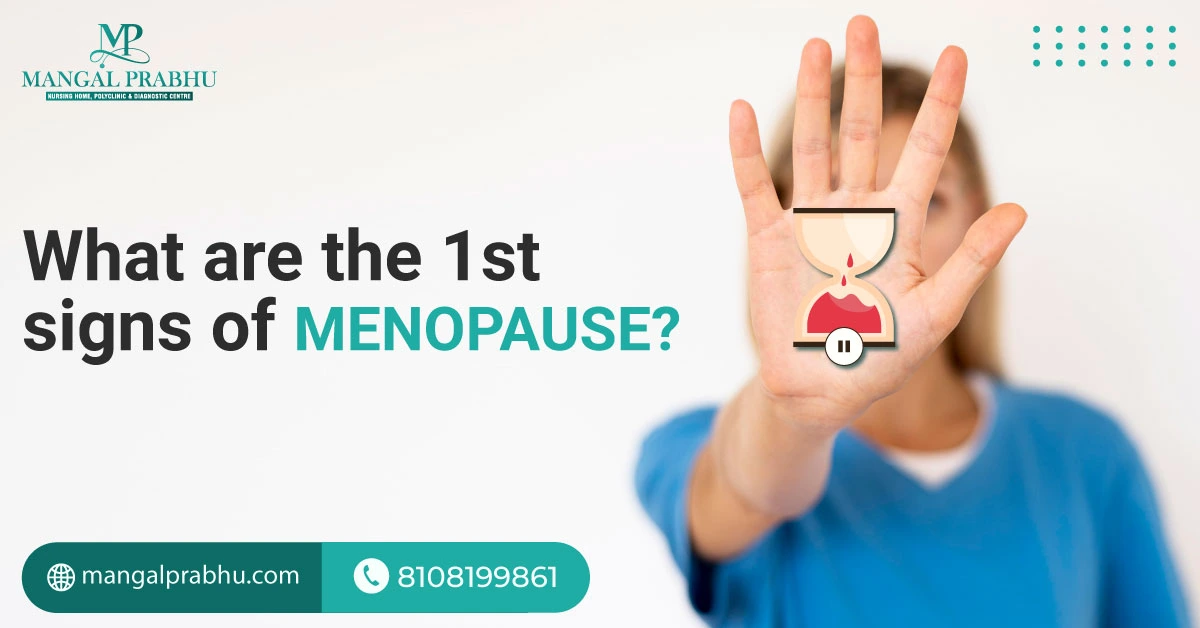
What are the 1st Signs of Menopause?
Menopause is a significant natural change that occurs in a woman’s life in her 40s and 50s. It marks the end of your fertility journey. Once you’ve entered menopause, you will stop having periods. Your ovaries will stop producing estrogen and progesterone — the two vital hormones responsible for your fertility. Menopause happens gradually.
The symptoms can, however, be physically and mentally overwhelming. Knowing what to expect can prepare you for hot flashes, mood swings, and other menopausal symptoms. So, what are the 1st signs of menopause? And when should you see a gynecologist in Navi Mumbai? Let’s find out.
Common Early Symptoms of Menopause
1) Irregular Menstrual Cycles:
The earliest and most obvious sign of menopause is irregular periods. You may have a menstrual cycle one month and skip the next month, or you may go months without periods. The fluctuating period is the biggest sign that menopause is approaching. If there’s a two-month gap between your menstrual cycles, you could already be in your perimenopause. The flow could be heavier or lighter.
2) Hot Flashes:
The sudden onset of hot flashes, which may happen at unexpected times and last a minute or longer, is another early sign of menopause. Night sweats might become more common, and you’ll notice a rapid heartbeat with intense warmth.
3) Emotional Changes:
Menopause can put you on an emotional rollercoaster. One minute, you are happy, and before you know it, you’ll feel sad, anxious, and depressed. A drastic drop in estrogen accompanied by disrupted sleep can be the cause.
Physical Changes
a) Weight Changes:
Low estrogen can shift the fat stored in your thighs and hips to the abdomen. It also affects your metabolism, making it difficult for your body to burn fat. Besides, women in their 40s and 50s tend to exercise less, making weight management difficult.
b) Hair Loss:
Estrogen is again blamed for hair thinning and loss during menopause. Dropped estrogen makes testosterone dominant, which can cause a receding hairline. This male hormone is also responsible for unwanted hair growth on the face, like the chin and upper lip.
Sleep Disruptions
Menopause can disrupt your sleep cycle. Some women sweat a lot at night and might wake up drenched, which can affect their sleep. Other women are unable to fall asleep at all or might wake up frequently throughout the night.
Cognitive and Emotional Effects
Menopause is an emotionally tough time. You experience one of the biggest transitions, from your childbearing age to a new midlife. This can make mood swings frequent. The mood swings can sometimes be so severe that they can turn into depression.
Brain fog is another common symptom that women nearing menopause report. If you’ve been having a hard time concentrating or remembering things, it could be an early sign of menopause.
Importance of Medical Consultation
Whether or not you need menopause treatment in Navi Mumbai depends on the severity of your symptoms. Some women don’t even notice the changes, while others go into depression. If you feel hopeless, helpless, or have lost interest in all activities, consult a gynecologist.
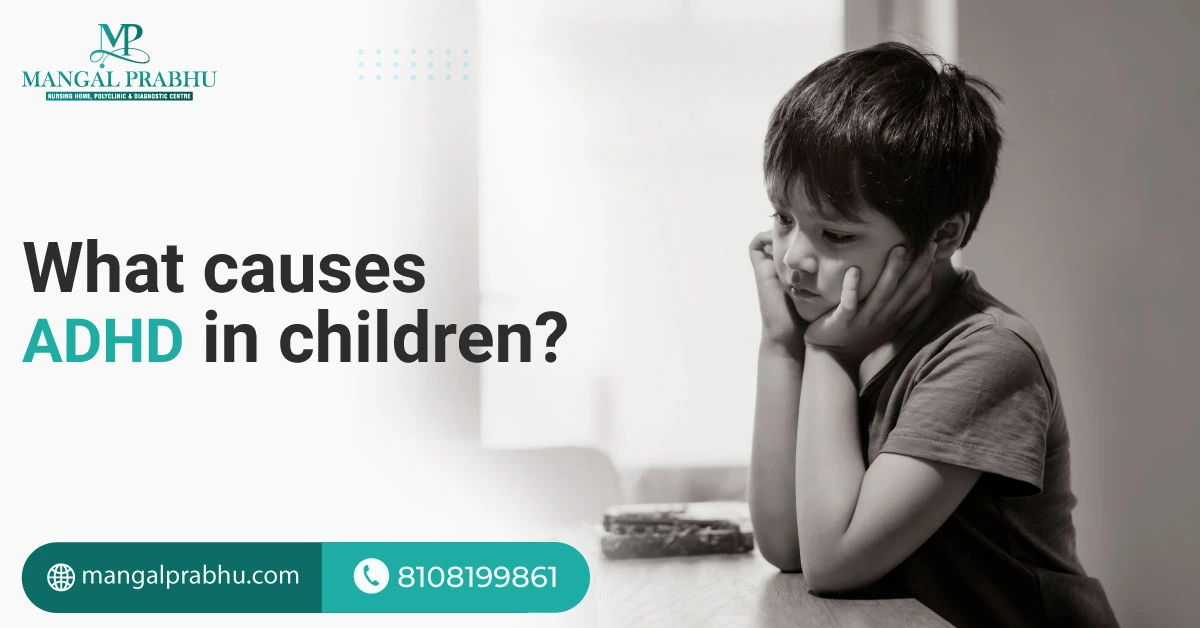
What Causes ADHD in Children?
Attention-deficit Hyperactivity Disorder is a neurological condition that affects the child’s ability to concentrate and self-control. Children with ADHD tend to behave differently and often struggle with family relationships, socializing, and maintaining good academic performance. This neurodevelopmental disorder affects millions of kids worldwide.
Although it can’t be cured and might even last till adulthood, a pediatrician in Navi Mumbai can help you manage its symptoms and improve your quality of life. Let’s see what causes ADHD in children.
What causes ADHD in children?
1) Genetic Factors
ADHD runs in families. Kids with parents, siblings, or a blood relative with this condition are more likely to develop it than other kids with no such genetic history. In fact, studies show that children of parents with ADHD are 50% at an increased risk of developing this neurodevelopmental disorder, and those with elder siblings with ADHD have a 30% risk.
Researchers haven’t discovered a single gene responsible for an increased risk, though. It’s believed that a combination of genes plays a part in making a kid more vulnerable to attention-deficit hyperactivity disorder.
2) Environmental Influences
Hyperactivity and inability to self-control are observed in children with poor brain development. One of the reasons that may contribute to this is lead exposure at a young age. Lead can interfere with your child’s neurodevelopmental milestones.
Prenatal exposure to certain chemicals and toxic substances is also linked to ADHD in children. If the mother smokes, drinks alcohol, or works in an environment where she’s exposed to lead, pesticides, and other industrial chemicals, the risk of the offspring developing ADHD increases. The environment at home can also affect the risk.
3) Neurobiological Factors
Children with ADHD have a different brain structure than normal kids. Neurotransmitters, such as dopamine and norepinephrine, may not be at normal levels, affecting the child’s ability to focus, control impulses, and execute tasks without getting distracted.
4) Lifestyle and Diet
Diet isn’t directly linked to ADHD, but it’s possible that consumption of certain foods can aggravate your symptoms. If your child eats lots of sugary foods and preservatives, they might be at an increased risk of getting ADHD. The symptoms can also be seen in nutrient-deficient children, particularly those with a diet that lacks omega-3 fatty acids, iron, and vitamin D.
Another factor is lifestyle. It’s not considered a direct cause, but certain lifestyle choices can worsen your symptoms. For instance, ADHD can interfere with your sleep routine. So, having a consistent bedtime routine and good quality sleep can help.
How to Manage Your Symptoms
ADHD treatment in Navi Mumbai focuses on managing symptoms. In addition to medication and behavioral therapies, these tips can help you with ADHD symptoms:
- Exercise regularly to improve blood flow to the brain
- Limit screen time to prevent overstimulation of the brain
- Create a calm and stress-free environment at home
- Be supportive and patient
- Provide a balanced diet full of essential vitamins and nutrients to your child
A few tips can go a long way in managing ADHD symptoms in children. With support and a good diet, your children can focus better and have good impulse control.

Which Type of Blood Cancer is Most Dangerous?
Blood cancer affects the bone marrow, blood cells, and lymphatic system, which are responsible for protecting the body from infections, circulating oxygen-rich blood throughout the body, and preventing bleeding. The cancer mostly begins in the bone marrow, the tissue that makes blood cells, and spreads to the lymphatic systems and the nearby organs.
Modern science has made certain types of blood cancer curable, including the ones labeled high-risk. However, it’s crucial to seek blood cancer treatment in Navi Mumbai as soon as you notice the symptoms. The success rate of the treatment depends on the aggressiveness of the disease, the type, and how far it’s spread.
Types of Blood Cancer
1) Leukemia:
Leukemia develops in the bone marrow, a spongy tissue responsible for making red blood cells, white blood cells, and platelets. Leukemia is a type of blood cancer that affects your white blood cells. It produces too many WBCs, leaving little room for other healthy blood cells to grow. Leukemia has further subcategories, depending on the type of WBCs affected and how fast it grows.
2) Lymphoma:
As the name suggests, Lymphoma affects your lymphatic system and the white blood cells responsible for fighting infections. In lymphoma, the cancer cells can start to grow in your lymph nodes, spleen, and thymus glands. It can also spread to other parts of the body, impairing your ability to fight off infections.
3) Myeloma:
Myeloma, or multiple myeloma, is a type of blood cancer that affects plasma cells, a type of white blood cells produced in the bone marrow. These cells are responsible for making antibodies, which fight infection. Myolema causes abnormal plasma cells to grow uncontrollably, leaving less room for the healthy cells to develop.
Most Dangerous Type: Acute Myeloid Leukemia (AML)
Many factors determine the danger level associated with blood cancer. However, many hematologists in Navi Mumbai believe that Acute Myeloid Leukemia (AML) is the most dangerous of all. Here’s why.
Among the three types of cancers listed above, the Acute Myeloid Leukemia is the most dangerous, as it spreads quickly to the brain, liver, and other vital organs, increasing the risk of organ failure.
Its aggressive growth is also linked to lesser production of healthy blood cells in the bone marrow. Even if the cancer is treated, acheiving a complete remission is quite challenging, especially in children, older people, and those with existing medical conditions.
Since the cancer spreads rapidly, the symptoms also appear quickly. You will notice increased bleeding, frequent infections, excessive fatigue, bone and joint pain, weight loss, and other relevant symptoms that become noticeable over days and weeks.
Treatment Options for Blood Cancer
The treatment includes chemotherapy with targeted therapy and stem cell transplant. The five-year survival rate for people with AML is 28%, although the numbers can vary depending on your age, health, how early the cancer is diagnosed, and if there’s any existing medical condition. Ideally, the sooner it’s detected, the higher the chances of a cancer-free life. Even if the treatment is succesful and there is no sign of cancer, your doctor will closely monitor you to ensure it doesn’t recur.

Life after Acid Reflux Surgery
Life with chronic heartburn, a burning sensation in the throat and stomach, and other symptoms of gastroesophageal reflux disease (GERD) can be challenging. In some cases, the symptoms are so severe that they interfere with your daily life. If you have tried all non-invasive procedures, like dietary adjustments and medication, but see no relief, it’s time to discuss acid reflux surgery in Navi Mumbai with a specialist.
Preparing for Surgery
The two most common surgical procedures for GERD are Fundoplication (creating a sphincter muscle at the lower end of the esophagus to prevent the stomach content from going back up) and LINX (using magnetic beads to tighten the sphincter).
Your surgeon will order tests like endoscopy and manometry to identify the severity of the GERD and determine the best surgical procedure. On the days leading up to the surgery, you may be put on a liquid and soft diet to avoid pressure on your digestive system.
The Recovery Process
The recovery period can vary depending on the patient’s health and the type of surgery. If the surgery is laparoscopic, you can expect faster healing and shorter hospital stays. Still, 1-3 days in the hospital are necessary, as your doctor will closely monitor your vitals and evaluate your ability to eat, drink, and digest before giving a discharge.
Pain and mild discomfort after surgery are common. Your doctor will prescribe medication to relieve pain at the incision site. You can expect to return to normal activities within 4-6 weeks. Avoid heavy lifting or strenuous exercises until your doctor clears you for it.
Dietary Adjustments
Your doctor will give detailed instructions on what to eat and avoid. Generally, it’s advisable to start with a liquid diet, preferably food that’s easy on your digestive health, and gradually transition to your regular diet. During recovery, your doctor will advise you against carbonated beverages and acidic food.
Here’s what can help speed up your healing:
- Eat smaller, more frequent meals
- Stick to the liquid, like fruit and vegetable juices, in the first few weeks
- Chew properly and eat slowly
- Slowly transition to solid food, but avoid acidic, raw, undercooked, and too-hard-to-digest food.
- Keep yourself hydrated
Long-term Lifestyle Changes
Acid reflux surgery has a positive prognosis. There’s a good chance you will find significant relief from the GERD symptoms after surgery. Although you may be on certain dietary restrictions, most people can eat like usual and have their favorite foods in moderation a few weeks post-surgery.
Some weight loss after GERD surgery is normal since you’ll be on a liquid diet. The best part is that heartburn, stomachache, the risk of ulcers from frequent episodes of acid reflux, and other symptoms will ease a lot, making your life a lot better. Light exercises, like walking and swimming, are highly advisable, as they help improve digestion post-surgery. Watch out for signs of complications, like fever, bleeding from the incision, and difficulty swallowing after surgery. Keep in touch with your general surgeon in Navi Mumbai, and stay positive.
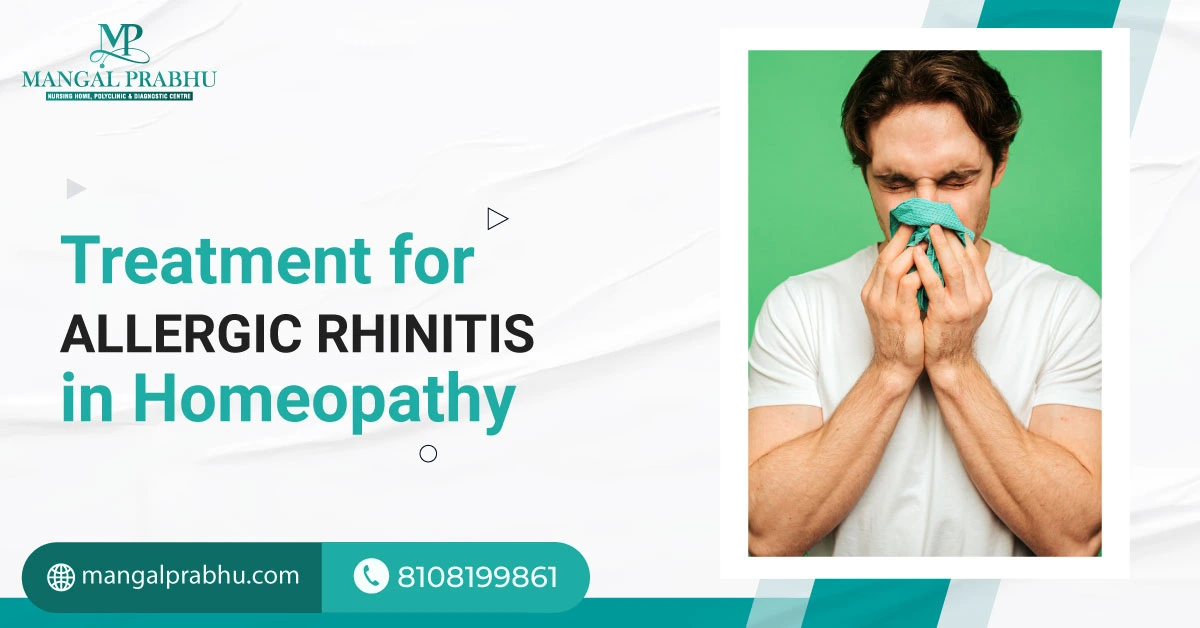
Treatment for Allergic Rhinitis in Homeopathy
Allergic rhinitis, commonly called hay fever, is a common condition that develops when a person is allergic to a specific substance and inhales or ingests that. You can be allergic to dust, mold, pet dander, and other environmental elements. When you are exposed to the allergen, your nasal passage will get inflamed, causing a runny nose, red and watery eyes, cough, and persistent sneezing. Many people are turning to homeopathy doctors in Navi Mumbai for allergic rhinitis. The question is, does it work? And what exactly does treatment for allergic rhinitis in homeopathy include? Let’s find out.
Common Symptoms of Allergic Rhinitis
Hay fever symptoms appear shortly after you come in contact with an allergen. It’s most common during springs due to increased pollen counts but can occur at any time of the year. Symptoms include:
- Congestion
- Runny nose
- Constant sneezing
- Postnasal drip
- Watery eyes
- Nasal mucus
- Itchy eyes and nose
- Headache
- Tiredness
- Sore throat
How Homeopathy Works for Allergic Rhinitis
Homeopathy is a holistic, personalized approach that focuses on diagnosing and treating the underlying cause of allergic rhinitis instead of suppressing the symptoms. This treatment approach enhances your body’s defense mechanism.
The specialty of the approach is that it believes in personalized treatment. If two patients have allergic rhinitis, a homeopathic doctor might offer different treatment plans to each based on their age, symptoms, and severity.
Popular Homeopathic Remedies
Allergic rhinitis occurs when your immune system mistakes an environmental substance for a hazardous toxin and triggers an inflammatory response. Homeopathy aims to reduce your sensitivity to allergens and restore your immune function. Here’s what it includes:
a) Allium Cepa:
It significantly reduces inflammation symptoms in people with watery noses and eye discharge. It’s recommended when the symptoms are accompanied by a burning and itching sensation.
b) Arsenicum Album:
It’s another highly effective solution for allergic rhinitis. It’s recommended for patients with persistent sneezing, congestion that interferes with sleep, difficulty breathing, tightness in the chest, and sensitivity to cold. Arsenicum Album improves the body’s healing ability and reduces its sensitivity to allergens.
c) Sabadilla:
Sabadilla is effective for people with pollen allergies. It’s also highly effective for those experiencing consistent sneezing with a blocked nose and hypersensitivity, including sensitivity to specific odors, like scented candles, perfumes, soaps, etc.
d) Wyethia:
Hay fever causes postnasal drip, which can irritate your throat. It also feels super dry and parched, making swallowing difficult. These symptoms can appear with a hoarse voice. Wyethia is a homeopathic remedy for allergic rhinitis, especially in cases where throat symptoms are involved. If you have an extremely itchy throat with a constant urge to scratch it and persistent dryness, your homeopathic doctor will consider Wyethia.
Benefits of Homeopathy for Allergic Rhinitis
Homeopathy doesn’t just alleviate or manage your symptoms but treats the root cause of the issue, thus offering long-term relief. This works wonders for patients who frequently develop hay fever. The medications are curated from natural substances, making them effective for people of all age groups and health conditions. If you are also seeking allergic rhinitis treatment in Navi Mumbai, choose a professional homeopathic practitioner and get your personalized treatment plan.
